Introduction:
I met
with the mining engineer and World War I History
enthusiast, Ross Thomas in Townsville and within 10
minutes I was convinced this was a story crying out
to be told. Ross knows more about The Australian
Miners in WW1 than anyone in the world, and that was
a damn good place to start.
When he told me about the tunnels of Hill 60 and the
heroic deeds of Captain Oliver Woodward, I knew the
story could only be done justice with a major
Feature Film.
I was well acquainted with David Roach the screen
writer from previous projects and felt he had the
passion and creative flourish needed to turn
Woodward's diaries into a thrilling 90 minute film
script.
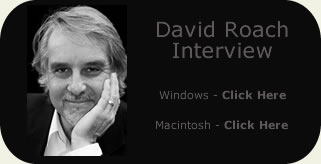
Ross
had a relationship with Oliver Woodward's
descendants in Melbourne, who agreed to allow us to
adapt his incredible war diary. The Australian War
Memorial Archives in Canberra had the original
support material. Months of film research followed,
to gather as much detail as possible of the miners
beneath the trenches.
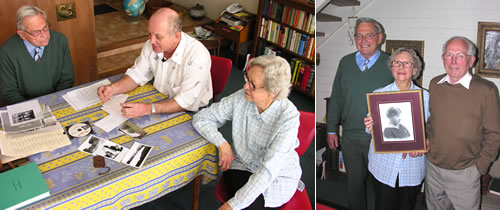
Next, I
needed a strong director to bring it all to the
screen.
I wanted to produce it for Australian and
International Cinemas and TV as well as DVD audiences
worldwide. But it had to be made for a budget of
$6million Australian dollars. So I needed someone who
could conceive ways to cut down on the need for a
large cast and lots of expensive sets but keep it
action-packed and claustrophobic. Then I saw Jeremy
Sims' film, LAST TRAIN TO FREO, all set in a
claustrophobic train carriage.
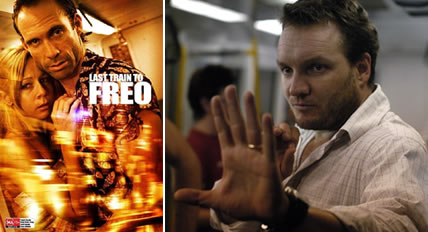
Jeremy
read our treatment, met up with writer David Roach,
and together they worked through months and many
drafts to produce a film script, well on the way to
a final masterpiece of drama, action and love lost.
We started making plans for a Shoot date of July
20th 2009. We have now had the full budget prepared by
Dennis Kiely, a Production Manager of 25 years
experience with feature films shot on location. The
scheduling of the film was done by PJ Voeten, who has
a long and glorious track record in film-scheduling
for some of the world's best film directors (eg Happy
Feet and Crocodile Dundee). He put together a finely
tuned 6-week film schedule to be shot entirely in and
around Townsville.
On my first reconnaissance trip, I found the perfect
fields, just outside Townsville, where we can dig to
create the trenches of WW1.
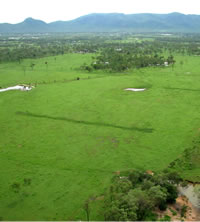
Within
a large shed on an industrial site of a Townsville
building entrepreneur, Brad Webb, we will build the
tunnels above ground so that the camera team and the
actors can work within a controlled environment.
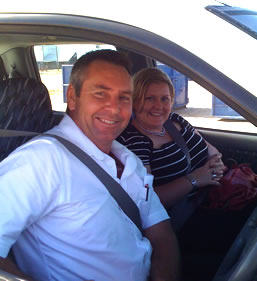
With
locations chosen, a script written and a director
rearing to go, we needed to find the perfect actor
to take on the leading role of Oliver Woodward - a
miner notable for his courage, dedication and
determination. Receiving a Military Cross and two
bars for his daring bravery, Officer Woodward is
also a man bitten by love and. A truly Australian
character, whose charisma and pragmatism was as
essential in inspiring his team of tunnellers, as it
will be to moving contemporary audiences. His
undertaking of an unbelievable task beneath the
trenches at the climax of his war experience, is a
shocking twist, bringing home the harsh realities of
war.
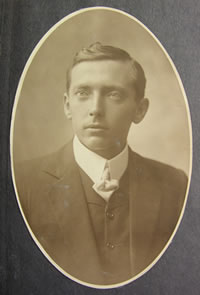
Brendan Cowell was the perfect choice. His many
awards and accolades are well-earned for the immense
and successful body of film, TV and stage work that
has catapulted him to the A list of actors. He is
destined for Hollywood status, in the footsteps of
Russell Crowe and Geoffrey Rush.
Early on, star photographer Wendy McDougall took
some great still photos of Cowell for us and with
graphic designer, Katerina Stratos, created a first
poster that is as revealing as it is potent
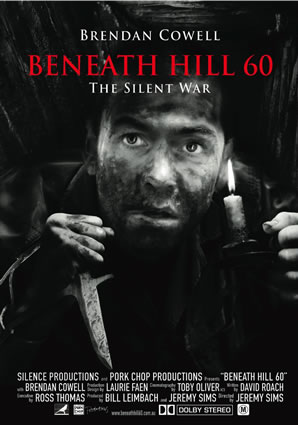
Because Woodward started his mining career at the
Charters Towers School of Mines, and the Australian
Miners of WW1 are so close to the hearts of
Queensland, we decided to make the entire film
there. Townsville played a large part in WW1 and has
been an army garrison town ever since, still playing
a big role in our ongoing military history. It
always has been Ross Thomas' intention to leave as
much of the film's props, costumes and sets to the
military museum building up there today.
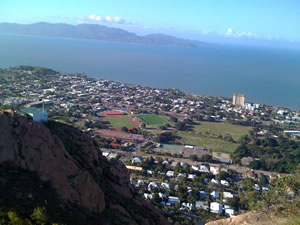
Jeremy Sims and I traveled North to Townsville from
his Fox Studios office in Sydney to meet with the
community and spread the word of our exciting
project. Our initial presentation was to some of the
city's dignitaries at the North Queensland Club
where Jeremy spoke of our ideas to combine a
production team from Sydney, Brisbane and
Townsville, mixing local actors, extras, and
tradesmen to build sets and create tunnels and
trenches.
Jeremy immediately fell in love with Townsville and
was soon convinced that this beautiful area and
enthusiastic community were exactly the foundations
needed to support our project.
Shooting the feature in Townsville would jack up the
costs of transport and accommodation by up to 30%,
but we hoped the community support and enthusiasm
could more than balance it out. It would also bring
work, money and tourism to the region. Also, from my
Producer's position, it was good to see a city so
recession-proof. With China as its main mining
market, it wasn't going to crumble immediately.
People were keen to see is happen there and many
were keen to invest to make it happen.
So, Jeremy and I began to scout for Locations. Much
to our delight, we found the fields on the outskirts
of town perfect for the WW1 Western Front scenes and
a rising ridge which is uncanny in its resemblance
to the notorious 'Hill 60' upon which our movie
relies.
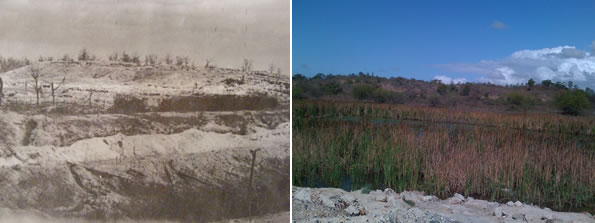
While there, Jeremy also presented to the Artistic
community at the successful Tropic Sun Playhouse in
the middle the city. After an inspiring first
workshop session, Jeremy had an arm-full of would-be
supporting actors and actresses from Townsville and
Cairns champing at the bit to be part of this new
film coming to their city, and enough extras to
build an army.
One month later, I returned to visit Townsville -
this time accompanied by the screen-writer, David
Roach, who started off our visit with another
workshop, this time on screenwriting at James Cook
University. It was set up by Debra Thomas from their
School of Creative Arts.
The University has bent over backwards so far in
their efforts to offer our Production the support we
vitally need so far away from major film cities - in
the form of studios, rehearsal space and even
student attachments.
I went on to meet with Townsville Enterprises (TEL),
from their very beginning, a group set up to help
bring commerce and tourism to the city. They were
very supportive in introducing us to interested
parties who would like to help make the project a
great success.
We engaged with commercial and non-commercial radio
stations, journalists at the Townsville 'Bulletin'
and had already had been a leading item on the TV's
nightly news. This coverage has been integral in
promoting the film and raising awareness and
enthusiasm in every area for our venture.
Latest Press - click here
SPAAmart
Back in Sydney, the film was selected to be one of
only seven films presented at this year's SPAAmart,
presented by the Screen Producers' Association
Australia (SPAA - visit www.spaa.org.au). SPAAmart is
a sort of "speed dating" between local / international
film distribution companies and prospective film
makers.
During the conference in 2008 on the Gold Coast
between November 12 - 15, Jeremy, David and I pitched
to representatives from the Distribution Companies
attending such as Hopscotch, Roadshow, Icon,
Transmission, Disney, Palace, Jump Street, Madman,
Granite, All Media, Warp, Bankside, IST, Tribeca and
Film Sales Company, amongst others. We came away from
the conference with a lot of interest from some very
prominent distributors, with whom we are currently
deliberating.

SCREEN AUSTRALIA
This year, the Federal Government has amalgamated
three different government film bodies (the
investment arm, the development arm and the archival
arm) to create one large 'SCREEN AUSTRALIA'.
To draw investors into the Australian Film Industry,
they have made available a rebate of up to 40% for
the investors in Australian film.
FINANCIAL STRATEGY
Creating the proper financial strategy for the
project has been an interesting process. After some
deliberation and consideration of the new SCREEN
AUSTRALIA incentives, we are now dividing the film
into units, each at $275,000, available to
professional or sophisticated investors only. We have
created a strategy whereby each unit of investment
will receive the rebate offered by SCREEN AUSTRALIA,
plus a 100% tax deduction for their investment (over 5
years). Further information can be found on our
Expression of Interest, available on the website, to
sophisticated investors.
Already in Townsville alone, we are thrilled to have
secured the financial interest and enthusiasm of
investors - businessmen, families, miners and even one
Knight of the Realm, Sir Mick Curtain.

